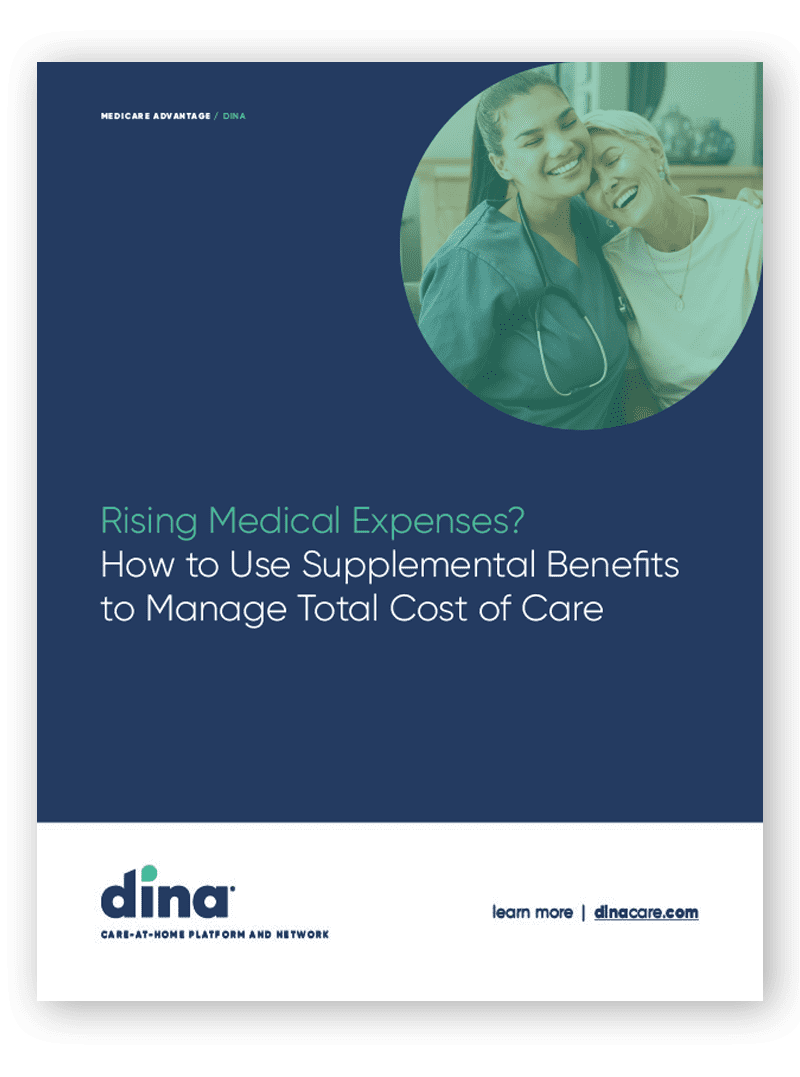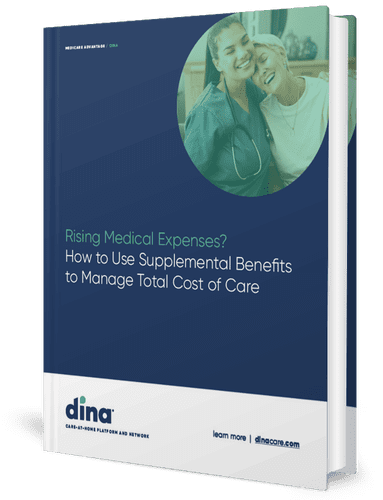
First Analysis Managing Director Andrew Walsh is a longtime healthcare executive and entrepreneur, who has worked with organizations like Optum, UnitedHealth Group and DaVita Health. He founded and scaled Educerus Health Solutions (acquired by PopHealthCare), an in-home assessment business focused on reducing the prevalence of undiagnosed chronic conditions among seniors.
Earlier this year, Chicago-based First Analysis led a Series B investment in Dina, with participation from existing investors Osage Venture Partners and First Trust Capital Partners, LLC. Last year, SCAN Health Plan, a Dina customer, also made a strategic investment.
Walsh shares what drives health plans, where care at home is heading and why he’s so excited about Dina.
Reflecting on your experiences with health insurance companies, what do you think matters most to them?
A long-time mentor in the industry told me that health plan executives care about four things: getting members in the door, getting paid the right amount for those members, managing their medical costs, and complying with regulations. Some combination of those four things are always top of mind.
How have you seen care at home evolve?
As I built my company, it was by definition care at home. Our mission was to reduce the prevalence of undiagnosed chronic conditions among seniors, and we did this via in-home screening programs, partnering with Medicare Advantage plans across the country. We knew that going to the member directly was the fastest way to try to solve this problem.

The obstacles in the home might never come up when somebody gets in a car and drives to a doctor’s office.
There may be all sorts of things that could lead to a fall, for example. There might not be enough food, or someone may struggle to get out.
Over time, the industry has come to see the value of care at home, and it’s exciting to see home-based services continue to grow.
What’s the challenge for plans to operationalize supplemental benefits?
Health plans underwrite medical risk, then they pay for medical risk through the networks that they’ve created. But they don’t always know how to manage non-medical related networks and administer non-medical benefits.
They struggle to develop a network of in-home services providers who address activities of daily living (ADLs), for example. They likely don’t know how to develop a network across multiple geographies of contractors that can do home modification to prevent fall risk.
Dina provides a novel way to unlock the true value of supplemental benefits at scale, and the company is one of the early innovators capitalizing on this market opportunity.
Dina provides a novel way to unlock the true value of supplemental benefits at scale, and the company is one of the early innovators capitalizing on this market opportunity.
At the same time, the concept of non-medical supplemental benefits has become important for health plans as a way to differentiate themselves from Medicare and from their competitors. And that, to me, is where there’s so much potential for Dina: it’s at this intersection where non-medical benefits are becoming more important for the population, but plans struggle to operationalize them. Finding the best partners, working through staffing/scheduling needs for members, creating transparency around the services delivered and paying for those services in a timely manner.
Why Dina?
As I looked at the opportunity to invest in Dina, there is so much natural overlap between what I’ve done in my background as an operator and the types of things Dina is doing today, and what Dina will do in the future.
We continue to see the home as an increasing nexus of care, along with the growing importance of supplemental benefits and services to health plan members. The consistent coordination and delivery of these newer, non-medical services is a growing challenge for health plans. Dina provides a novel way to unlock the true value of these benefits for members at scale, and the company is one of the early innovators actively capitalizing on this market opportunity.
How does the regulatory landscape play into this?
I see so much potential for where this business can grow based on market dynamics and regulation changes with Medicare Advantage and Managed Medicaid. As a result of recent rule changes like the 2025 MA Rate Notice and upcoming 80/20 Rule, reimbursement rates are going down and utilization continues to rise, especially with older members and people with complex needs. There are revenue implications for health plans serving seniors, but also big opportunities to leverage supplemental benefits and in-home care to create value, especially as plan options continue to increase. We expect Dina to be at the forefront of creating value for health plans as they continue to navigate an ever-changing landscape.

Rising Medical Expenses?
Don't Cut Benefits!
Instead, see how to drive smart utilization of non-medical benefits to meet your value-based objectives. Download the report "Rising Medical Expenses? How to Use Supplemental Benefits to Manage Total Cost of Care" to learn more.





